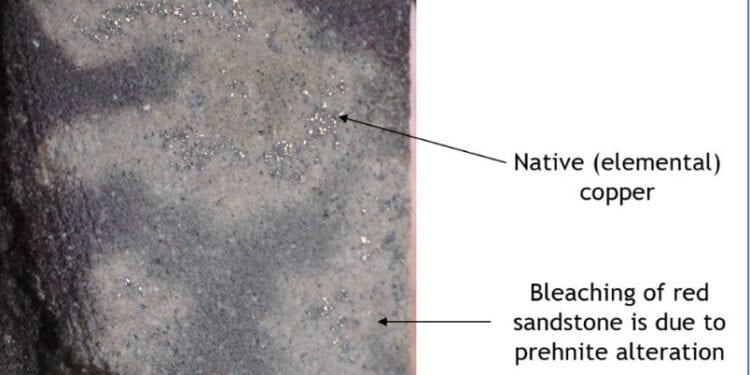Success With First Hole At Ecuadorian Project
Aurania Resources Ltd. (TSXV: ARU) has had instant success with the first drill hole at the Tsenken N1 target intersecting sediment-hosted copper in the company’s Lost Cities – Cutucu Project in southeastern Ecuador.
Drill hole at Tsenken N1 (TSN1-001) reached a depth of 722m and native copper was intersected within 2m of the maximum depth that the small-format drill could reach.The second drill hole on the target is now underway.
Mineralisation is immediately beneath a 75m thick lava layer that constitutes an impermeable barrier within the permeable sedimentary strata.
Chairman and CEO, Dr Keith Barron, said that though the intersection was modest with grades below economic levels, the occurrence of native copper beneath the impermeable layer within the red beds is a key piece of evidence supporting the exploration model that the Company is using for sediment-hosted mineralisation.
He said the next step is to drill through the impermeable layer near the crest of a fold where the model predicts that more robust mineralisation should be located. The second scout drill hole at Tsenken N1 is aimed at just such a target.
“We believe that through a modest intercept, that we have cracked one of the key elements to sediment-hosted copper in the Tsenken target area, and we look forward to completing the second drill hole that is currently underway,” Dr Barron said.
“The drill had reached its maximum depth just as it entered the MobileMT conductor at the first hole. The native copper intersected is extremely conductive – it’s effectively like intersecting electrical wire mesh in the drill hole.
“Our exploration model for sediment-hosted copper mineralisation combines oil geology with controls on the formation of mineral deposits to define the location of target areas for drilling.”
Field data is being used to identify folds in the impermeable lava that would have constituted trap sites for oil and sour (sulphur-bearing) gas that is likely to have provided sulphur for the accumulation of copper sulphide mineralisation. Evaporites associated with salt also contain sulphur-bearing minerals (sulphates) and specific faults have been identified as features along which salt has risen to form reactive walls against which copper-bearing basin fluids would accumulate and reacting with sulphur to form copper sulphide mineralisation.
This work is being used to identify further drill sites for sediment-hosted copper exploration.












